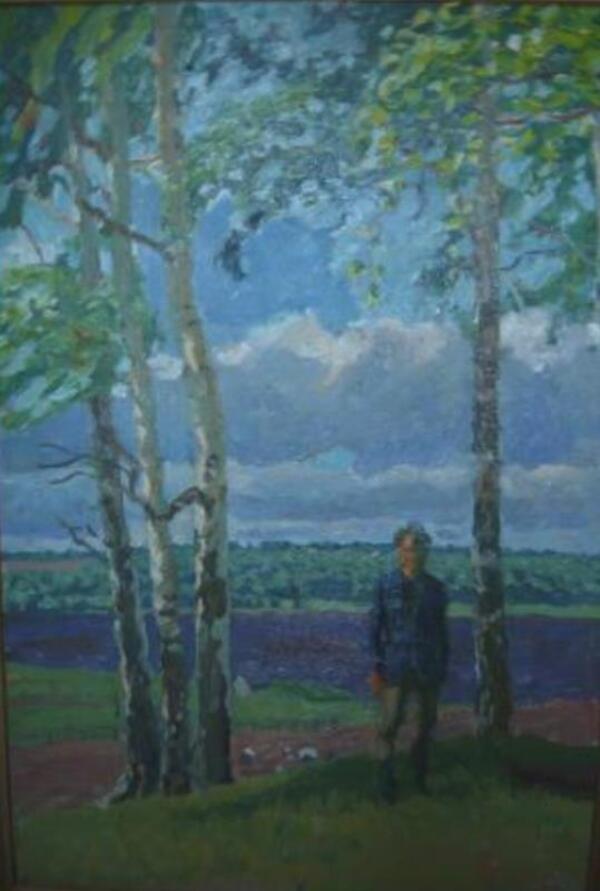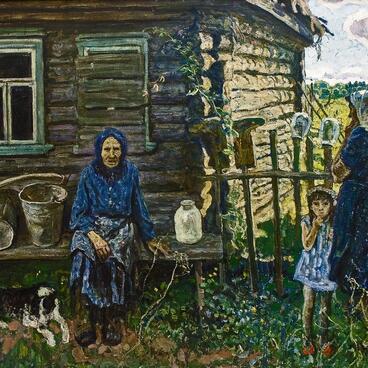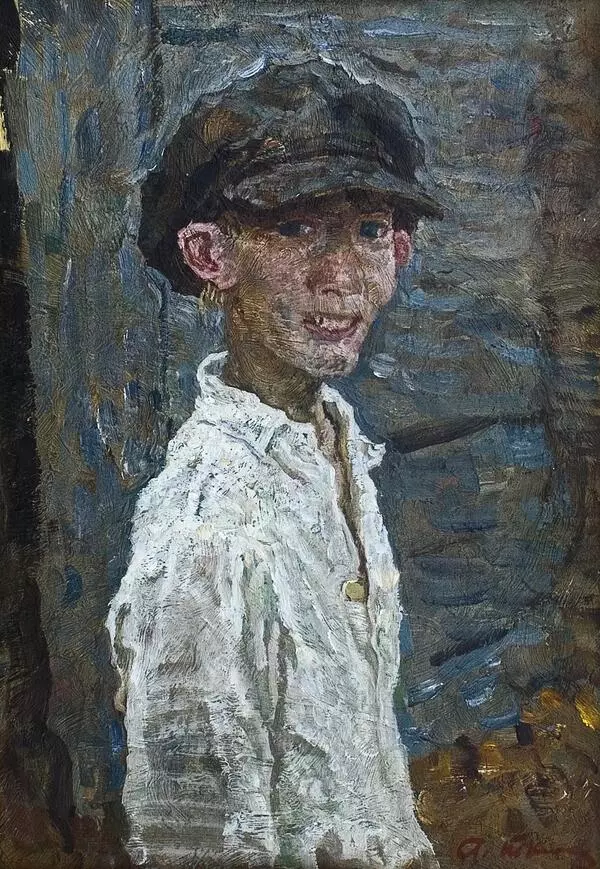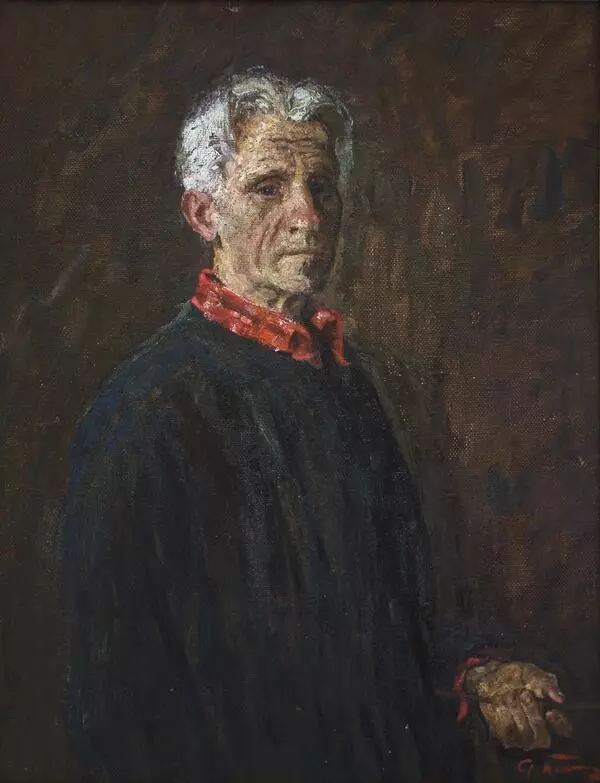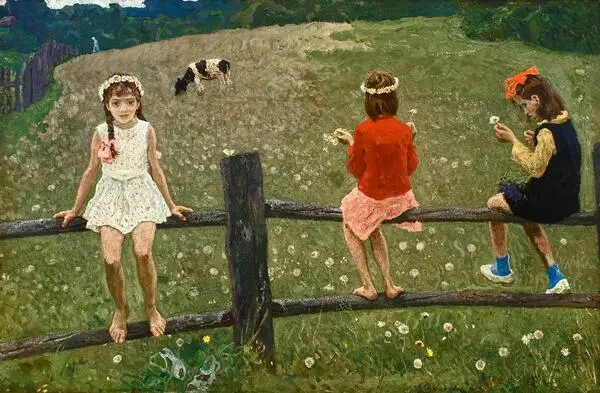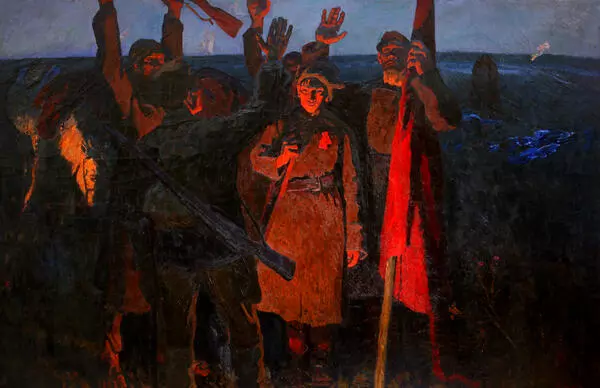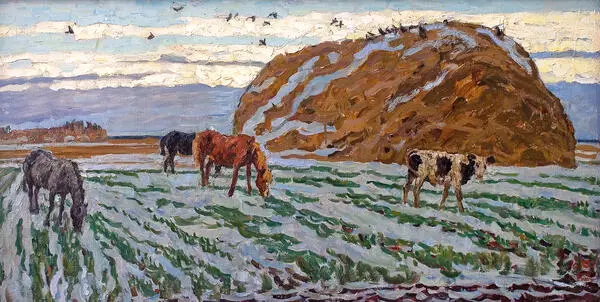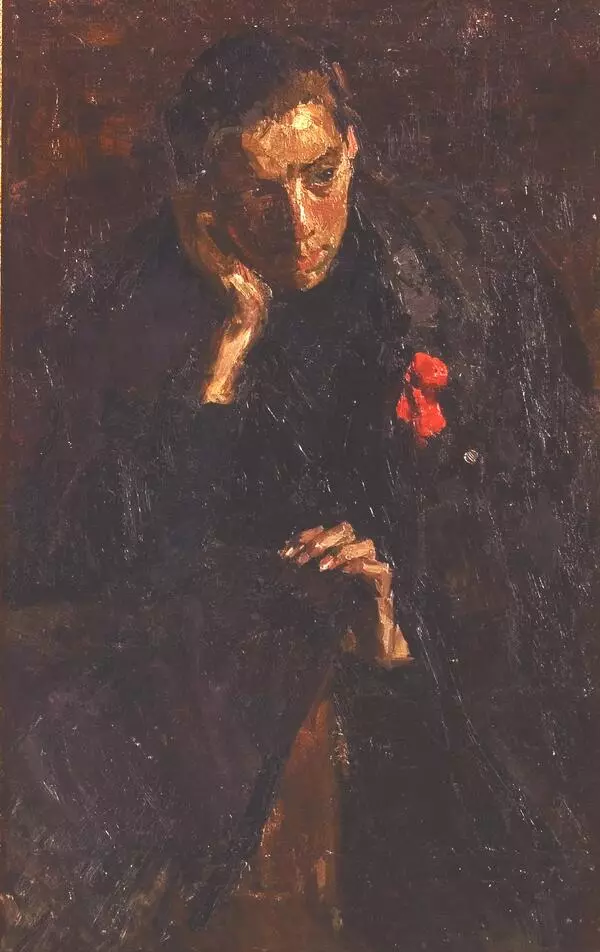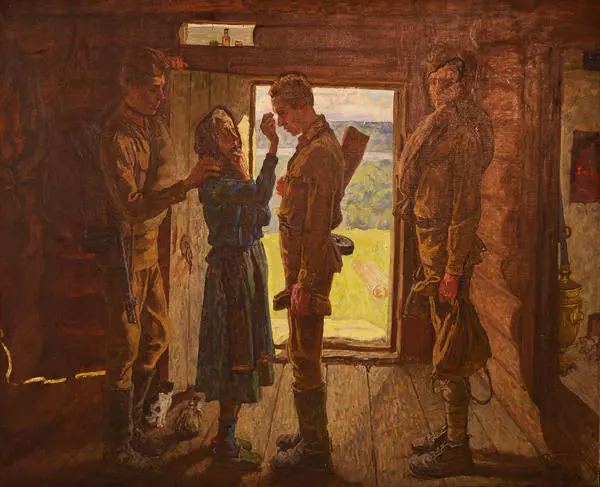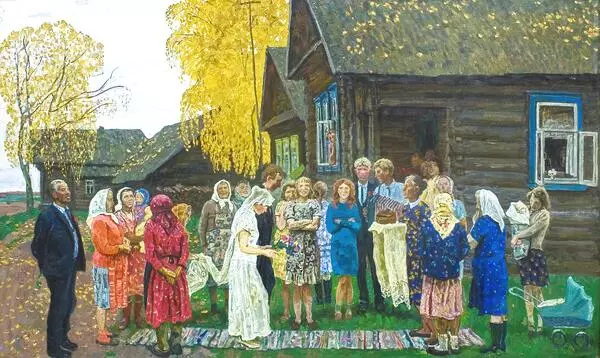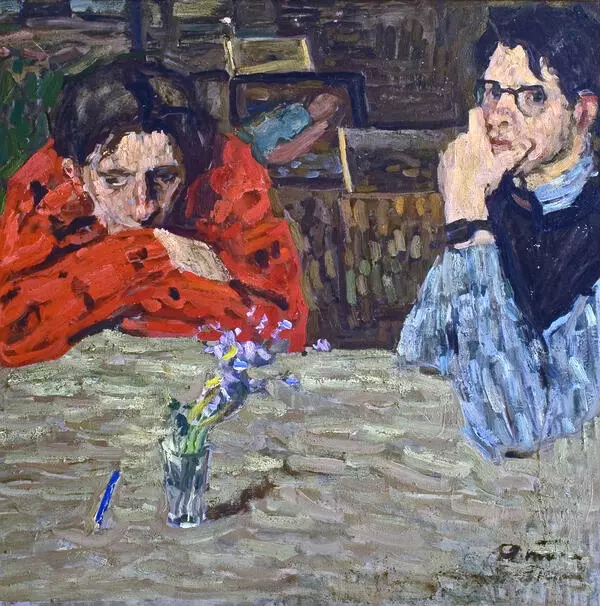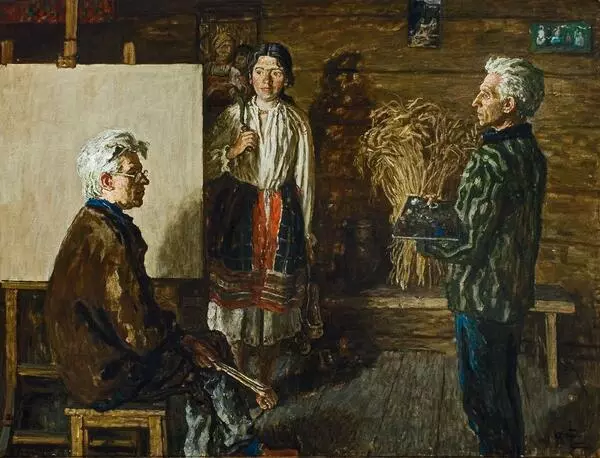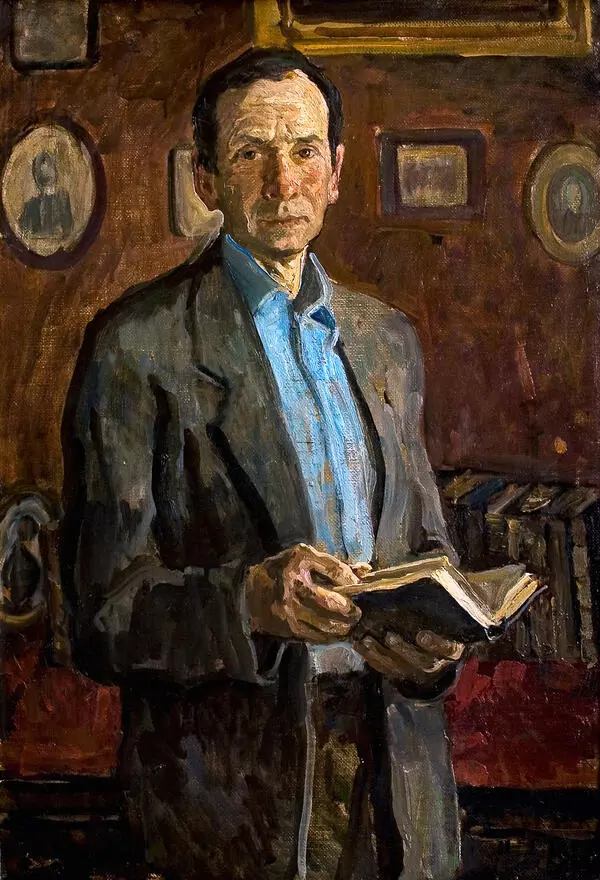The Tkachyov brothers finished ‘National Memory’ in 1980. In it, they depict a bridefroom and his wife-to-be, who are nervously laying flowers at the foot of a monument. Young men and women stand silently nearby.
They have all come to respectfully pay homage to the heroes of the war. The monument, on the right side of the painting, depicts a soldier kneeling at the burial site of soldiers.
The artists use clear and bold brushstrokes. They portray the rich green of the grass and the deep blue of the river reflecting the sky. The sunlight bursts through the foliage and illuminates the subjects. This color palette choice helps to create the sensation that the soldiers have not fought in vain. They have managed to preserve life for future generations, their old haunts will prosper and their grandchildren will be able to raise families there.
The Tkachyov brothers found the location for the picture in Tver Oblast, not far from Vyshny Volochyok, on the banks of the river Msta. The artists heard stories there about female anti-aircraft gunners, who defended the Msta dam from attacks by enemy aircraft. In a cemetery in the village of Serebryaniki, the Tkachyovs saw a war memorial, with a soldier kneeling over a mass grave of soldiers. Many soldiers died from their wounds in local hospitals. Local residents explained how they dug into the frozen ground in severe frost in order to bury the dead soldiers during the war. Today these burial sites have become sacred.
The artists use clear and bold brushstrokes. They portray the rich green of the grass and the deep blue of the river reflecting the sky. The sunlight bursts through the foliage and illuminates the subjects. This color palette choice helps to create the sensation that the soldiers have not fought in vain. They have managed to preserve life for future generations, their old haunts will prosper and their grandchildren will be able to raise families there.
The Tkachyov brothers found the location for the picture in Tver Oblast, not far from Vyshny Volochyok, on the banks of the river Msta. The artists heard stories there about female anti-aircraft gunners, who defended the Msta dam from attacks by enemy aircraft. In a cemetery in the village of Serebryaniki, the Tkachyovs saw a war memorial, with a soldier kneeling over a mass grave of soldiers. Many soldiers died from their wounds in local hospitals. Local residents explained how they dug into the frozen ground in severe frost in order to bury the dead soldiers during the war. Today these burial sites have become sacred.
Many people come everyday to honor the soldiers’ memory. Similar monuments have been preserved all around the central provinces. The subject of “National Memory” is clear and close to the heart of all Russian citizens.
The Tkachyov brothers’s paintings on the theme of war are all the more valuable because they were created by its direct witnesses and participants. Alexei Tkachyov was a homefront worker. He worked at the Uralmash munition factory for more than six months. The artists recalls, ‘I worked, just like every worker, with no allowances for young people, on tank engines. The night shifts were especially difficult as the desire to sleep was overpowering, and hunger was my constant companion.’ Sergei Tkachyov, the older brother, volunteered to go to the front in autumn 1941. He served the whole Great Patriotic War as a private and was involved in a lot of action.
The Tkachyov brothers’s paintings on the theme of war are all the more valuable because they were created by its direct witnesses and participants. Alexei Tkachyov was a homefront worker. He worked at the Uralmash munition factory for more than six months. The artists recalls, ‘I worked, just like every worker, with no allowances for young people, on tank engines. The night shifts were especially difficult as the desire to sleep was overpowering, and hunger was my constant companion.’ Sergei Tkachyov, the older brother, volunteered to go to the front in autumn 1941. He served the whole Great Patriotic War as a private and was involved in a lot of action.


